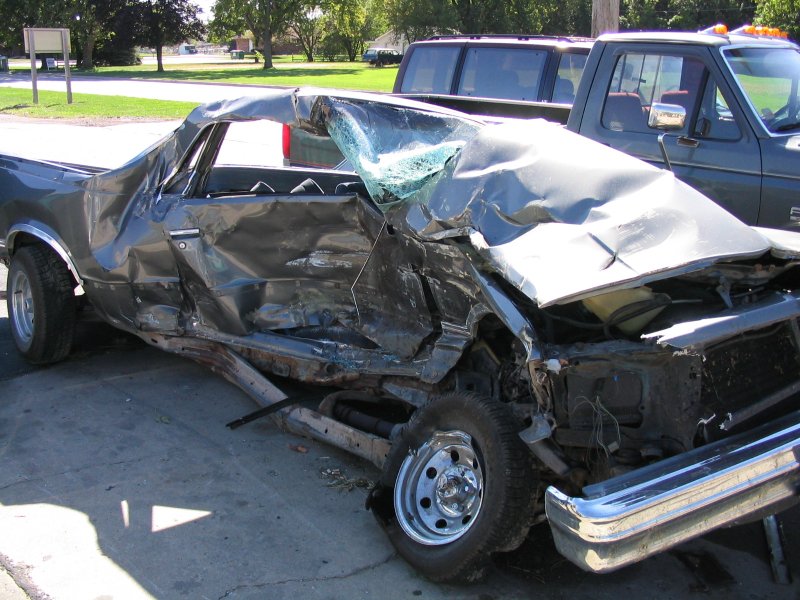
In a huge front-page story Friday, the Chicago Tribune published yet another installment in its long-running vendetta against the city's photographic traffic enforcement program. Because the Trib chose to obscure key information about the severity of crashes, the story is worthless as an evaluation of the city's red light camera program.
The article lavishes attention on a $14,000 study "commissioned by the Tribune [that] concluded the cameras do not reduce injury-related crashes overall." But if you manage to get 2,000 words into the article, authors David Kidwell and Alex Richards acknowledge that nine years ago the Federal Highway Administration also commissioned a study on red light cameras. And if you take a close look at the FHWA study, it debunks the entire premise behind the Tribune's analysis.
The FHWA employed a methodology that closely resembles the Tribune's, with one all-important difference: The feds incorporated the severity of crashes into their calculations. Both studies found that red light cameras tend to prevent right-angle crashes, while rear-end crashes increase. But since FHWA also acknowledged that right-angle crashes are more severe and impose higher costs on society than rear-end crashes, it found that even with increases in one crash type, the benefits of red light cameras outweigh the costs.
On its website explaining the FHWA study, the University of North Carolina's Highway Safety Research Center clearly states: "Since the angle and rear-end crashes are of different severities, you must combine both the change in frequency with differences in severity in the analysis. This is why looking... just at changes in total crash numbers is not correct." While the Trib interviewed a UNC researcher about camera site selection, it failed to note this basic conclusion that upends the paper's own methodology.
Put simply, the Tribune's methodology ignores the most important factor – the number of people killed and the severity of injuries sustained at intersections with red light cameras.
The FHWA didn't make that mistake. Factoring in "the lesser severities and generally lower unit costs for rear end injury crashes" the agency concluded that red light cameras achieved $14-18 million in savings to motor vehicle occupants in urban and rural intersections in seven municipalities. Only thousands of words into the piece, when mentioning the FHWA study, does the Tribune admit that there is a difference in severity of different crash types.
The Tribune also drew unwarranted conclusions from its own study, which found that the change in total crash numbers was not statistically significant. The study itself says "the increase in crashes may not necessarily be because of [adding red light cameras], but may just have happened by chance."
But the data the Tribune collected is sufficiently robust to bolster the conclusion that red light cameras reduce right-angle crashes.
"[The] Chicago Tribune's study confirms that these cameras help to reduce dangerous angle crashes that are more likely than rear-end crashes to cause serious injury or death," Chicago Department of Transportation Commissioner Rebekah Scheinfeld said in a statement today. They're less severe because they're slower – drivers are decelerating, and going the same direction, during rear-ends – and cars have crumple zones in the front and rear, but not the sides.
CDOT, responding to the Tribune, said it is proceeding with a review to make sure the cameras are placed where they're most effective, specifically where there's a demonstrated problem with angle crashes. Additionally, previous research [PDF] by one of the researchers behind the Tribune's study suggests that red light cameras work best at intersections with four or more red light-running crashes per year.
Based on their review of crashes at a subset of all red light cameras the Tribune's study authors said this group comprises about 40 percent of cameras. There's validity in this recommendation and Scheinfeld has recognized it. She told aldermen gathered at an October hearing that she has continued cleaning up the red light camera program the Emanuel administration inherited, and has even shut down several cameras this year at some low-crash intersections.
Trib's Shoddy Journalism Provides Fodder for Mayoral Candidates
Today, 2nd Ward alderman and mayoral candidate Bob Fioretti announced that he will be introducing an ordinance to shut down red light cameras by the spring.
Ald. Fioretti: traffic cameras exists b/c of fraud, abuse back room deals. He's presenting ordinance to drop cameras. pic.twitter.com/LfkDnCCQGX
— Yolanda Perdomo (@yolandanews) December 22, 2014
He wasn't the only mayoral candidate to latch onto the flawed premise of the study. Mayoral candidate Jesus "Chuy" Garcia, a Cook County commissioner, said that Chicago's red light cameras are "pickpocketing" people. People who broke a traffic law and put other motorists, pedestrians, and bicyclists in danger. (Garcia, as it happens, does support cameras when it suits him: He voted for a red light camera in suburban River Forest and also accepted a donation from Safespeed, the would-be camera operator.)
Even in the Tribune's reporting, none of the experts recommended putting an end to red light cameras in Chicago. The closest anyone came to that was Joseph Hummer, a Wayne State University engineering professor, who said in a follow up article that CDOT "[needs] to reimagine the entire program and do it well," he said. "Do it right this time."
Both the FHWA and the National Highway Traffic Safety Administration, which sets standards for vehicle safety features and conducts traffic safety research, endorse using red light cameras to reduce injuries to people. But the Tribune continues to obscure the safety benefits of automated enforcement and produce stories that lead political opportunists to take aim at the program. This is putting Chicagoans at risk: The data is out there for the Tribune to use, if it actually cares about preventing injuries and deaths, that red light cameras improve safety on the streets.



